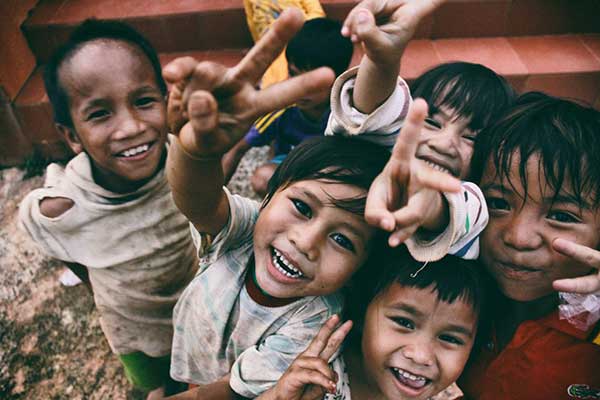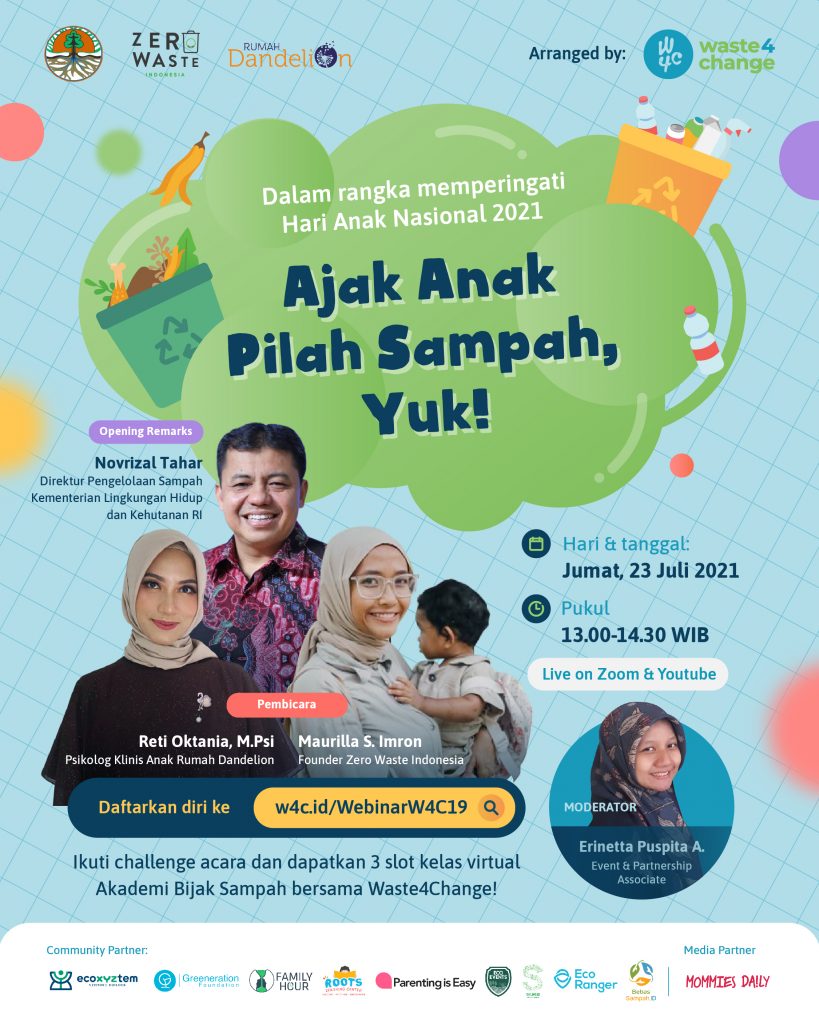Teaching Kids to Be Responsible with Their Waste

There’s a saying that “We do not inherit the earth from our ancestors, we borrow it from our children and grandchildren”. Hence, we should ask ourselves this question: What kind of earth that we will “give back” to our children?
Our responsibilities lie not only in restoring our heavily damaged environment, but also in teaching the younger generations to appreciate and love the environment as early as they can, in hope that they will not repeat the same mistakes that we did.
Therefore, parents and family pose a central role in providing fun learning environment for kids to learn about nature and the world they live in, to make them love and appreciate other living creatures besides human, and to make them willing to take care of our one and only earth that will, in return, take care of us too.
Such environmental education can start from a specific issue such as waste. Moreover, in light of the National Children’s Day 2021, Waste4Change held a webinar entitled “Ajak Anak Pilah Sampah, Yuk!” by inviting 2 experts in their respective field, which are Maurilla S. Imron, Founder of Zero Waste Indonesia and Reti Oktania, M.Psi, a Child Clinical Psychologist from Rumah Dandelion.



3 Ways To Teach Children to be Responsible with Their Waste
From the webinar, there are several points to be highlighted on ways to nurture a responsible behavior towards waste to children from early years, which are:
- Giving Examples
It is very important to each and instill basic universal values to children as early as possible, including being responsible with the waste that they produce.
So, at what age should we introduce them to such values? According to Reti, in a child development stage, children start having their own autonomy when they are 1,5 years old. This means that they already have their own will, and we should start instilling those values before they turn 1,5.
But how exactly do we teach them? The answer is simple: by giving them examples. “Children see, children do”. Basically, children will copy whatever it is that we do and say. Therefore, we should be fully aware of our actions and words since those are the very things that our kids will copy.
2. Stimulate Their Senses and Giving Prompts
Reti Oktania also stated that since very early, children know that their world is filled with sensory stimulation. Consequently, the most fundamental thing of a child’s learning process is to stimulate and activate their senses, because it is through them that kids will pick up and process things from their surroundings.
For example, if we want to nurture their love for nature, we can start by simply teaching them the difference between leaves, papers, woods, stones, and sands. This activity will stimulate their tactile sense and make it easier for them to learn about sorting waste later on.
Moreover, prompts are also important. Prompt can be defined as something that serves as a reminder, and it can be categorized into two: verbal and visual. Verbal prompt means that we remind our children through spoken words, whereas visual prompt can be in the form of pictures or posters that are placed throughout the house to help them learn better.



3. Appreciation and Consequences
When children have started practicing the waste values that we have taught, then we need to start giving appreciation for the specific behaviors that they do. That way, they will know that what they do is the right thing to do, for example when they bring their own tumbler, or when they put a discarded paper to the paper waste container.
On another hand, if what they do is not yet aligned with what we taught, teach them about the consequences. Consequences can be divided into two types: natural and logical. For example, if a child spilled some water, then he/she can get slipped. Whereas the logical consequences are more like something that might or might not happen, but can be predicted logically. For instance, when we are traveling and we forget to bring our own water bottle, then the consequence is that we might get thirsty and it might be difficult to buy some water.
Implement 3R – Routine, Rituals, Rules
- Routine: Keep giving them examples and perform the same thing everyday so that it becomes a habit, for example in sorting waste. Do not also forget to provide some visual prompts such as colorful waste bins.
- Ritual: This one is similar to routine, but more emotionally engaging. For example, a family ritual where every time someone’s having a birthday, we celebrate it by planting a tree/coral.
- Rules – After we implement both the routine and ritual, parents and children need to sit together and discuss about boundaries or the do’s and don’ts. Also remember that we need to give children a chance to be involved in the making of the rules.
Last but not least, it is never too late to start teaching our kids to be responsible with their waste. In a child development context, we might be familiar with the term Critical Window Period – a phase in which children will rapidly absorb new things that they see and experience.
Even so, in every phase of a child’s growth, we can still instill new values using different methods. The stimulations that we give should not stop only at the “golden age”, but rather we adapt them according to the child’s development characteristics in order for them to receive it effectively.
Therefore, let’s start teaching our kids to be responsible with the waste that they produce, in order for the younger generations to care more about nature and the environment. Because who knows, the earth might become a lot better when it’s in their hands.
To watch the full webinars and other interesting videos, visit our YouTube channel: Waste4Change
Read Indonesian version.



